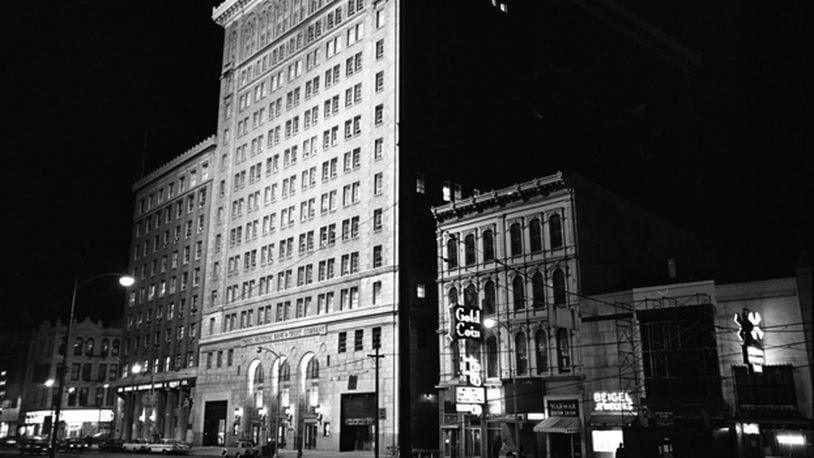>> SEE PHOTOS: Third National Bank & Trust Building
The fourteen-story building was built in 1926, and is located directly across from Courthouse Square. Designed by former Dayton architectural visionaries Schenck & Williams, it was finished throughout with imported marble & mahogany woodwork and bronze check desks. In addition, the original teller counters were protected by heavy bronze screens. Aside from the outer lobby, only the 14th floor former upper management offices retained their original architecture.
>> RELATED: The Buildings of Dayton: J.K. McIntire Company
>> RELATED: Photos of J.K. McIntire Company Building
In 1984, Society Corp. purchased the Third National Bank & Trust Co., ending its run as the oldest national bank in continuous operation since 1863 (founded as the Second National Bank). The property became the Society Bank Building in 1986.
In 1994, Society Corp. of Cleveland, OH and KeyCorp of Albany, NY merged to form KeyBank. Two years passed before the decision was made to rebrand Society Bank, hence another name change to the KeyBank Building in 1996. In 2008, KeyBank relocated to the former MeadWestvaco Tower on 10 W. Second St. and gained naming rights to become the KeyBank Tower.
In August 2010, controversial Hindu guru Annamalai Annamalai, aka Dr. Commander Selvam, bought the KeyBank Building and renamed it the Paru Tower. Commander's Cantina and the Downtown Grocery & Cafe were the only businesses open in the building prior to its closing in 2012.
On June 17, 2016, the City of Dayton purchased the property for $500,000. Though vacant, the building is secure and in great condition aside from peeling paint in the 14th floor offices.
Currently, the City of Dayton and the Downtown Dayton Partnership leadership are discussing redevelopment strategies that will hopefully give this historic building a new life.
About the Author
